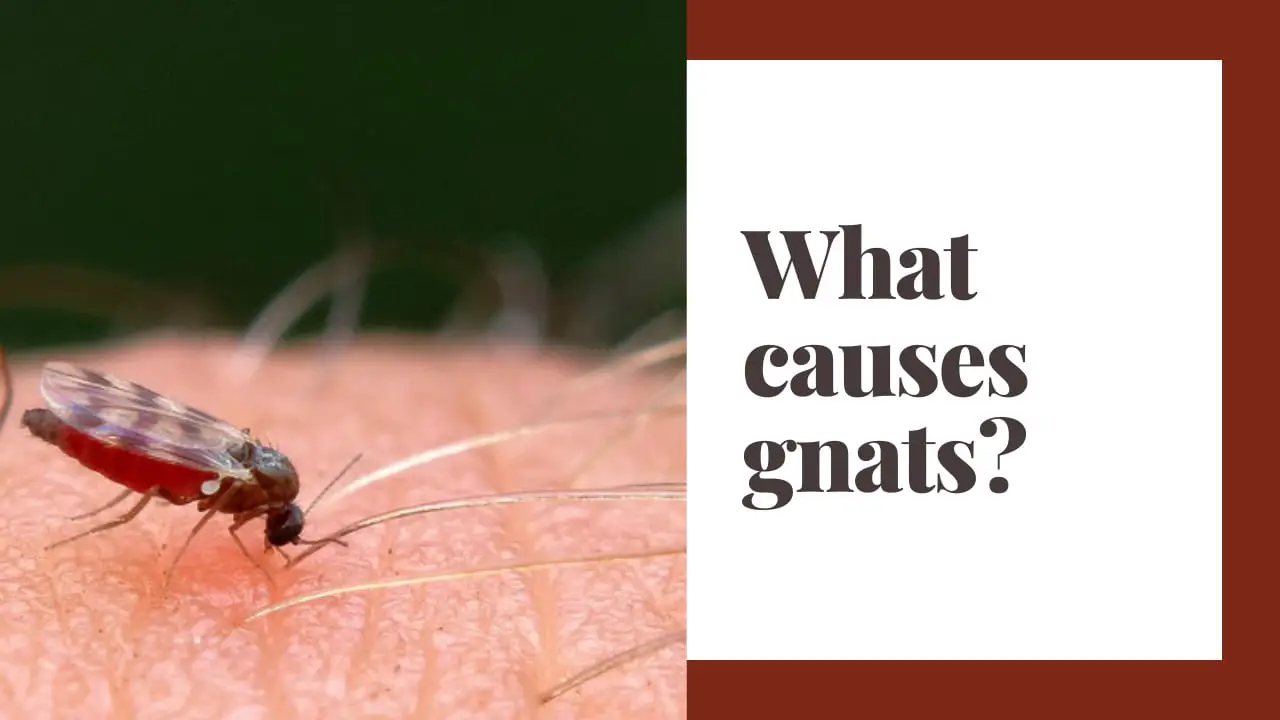Gnats are true insects that typically resemble mosquitoes in external morphology. They are characterized by having tiny heads with conspicuous eyes and slender abdomens.
They have relatively long antennas at the top of their heads which contrasts decently with the short antennas of most other true flies, and most of them are weak fliers, traveling only short distances and preferring to navigate around items by walking or hovering about.
Gnats are commonly brownish to grayish in appearance although individuals bearing other colorations, for example light green, have been observed too.
If the insects you have inside and around the house look more like the common housefly than they resemble mosquitoes, you’re probably dealing with a fruit fly or phorid fly infestation. Drain flies (another category of insects more closely related to gnats than fruit flies) also infest drains and moist places harboring rotting organic materials too!
Read: What causes fruit flies and How to get rid of fruit flies
What causes gnats?
The most popular type of gnat found inside and around the home is the dark winged fungus gnat. This type of gnat is lured into the house by moist areas harboring fungus populations. These areas typically include potting soil, damp woods, damp drywalls and poorly ventilated areas such as attics and crawl spaces. Outdoor infestation areas include shaded moist woods, moist soils especially those near entry points such as doors and windows and under piles of organic debris and leaves.
Types of gnats that invade the house and what attract them indoors
1. Dark winged fungus gnat
As mentioned earlier, these critters are attracted into the house or the surrounding compound by moist areas harboring fungi and algae populations. Their larvae feed on these fungus for sustenance and that is why the adults seek out these areas to reproduce.
Outside the house, many areas can easily harbor fungus gnat populations. Beneath the pile of old damp wood works sitting around the corner is a perfect area for their reproduction, so is any layer of moist shaded soil such as areas covered by overhanging home roof for example near entry points like windows and doors. Fungus gnats can also use under leaves and piles of organic debris to lay their eggs. The larvae only need some few weeks to develop into adults and seek out mates to reproduce with.
Indoors, fungus gnats are mostly attracted to potting soil of houseplants. In fact, most indoor infestation of fungus gnats usually happen around houseplants. Preventing the soil form drying between watering, especially for the top layer of soil promotes growth of fungi and algae which attracts the attention of egg laying mommas. Doing the opposite is often the most effective way of preventing indoors gnat infestation; to allow plants to dry between watering sessions, especially the top 2 to 3 inches of the soil since that is where the eggs and larvae thrive.
Fungus gnats can also be attracted to areas elsewhere having moisture problems frequently. These places can easily harbor fungus growth especially if the affected spot is a woodwork.
What do fungus gnats look like: Dark winged fungus gnats are black to grayish looking insects with yellow slender abdomens. Their total body length range from 2 to 11 millimeters. They have hump thorax region.
2. Black flies
Black flies are notorious biting insects that suck blood from humans and other mammals. Only the females do this though, and it’s to gain protein for laying eggs. Female black flies can travel long distances in search for bloods and people living near waterways can be one of their popular targets since these critters lay their egg around flowing water like streams and rivers.
Black flies typically do not infest homes since their larvae only survive on flowing waters, but the biting populations around the property seeking for blood can be a source of nuisance and headache. Some can even transfer diseases and their bites are usually painful with localized swelling. Allergic reactions are also common too.
Control of black flies population around the house is not easy. The best way to avoid their bites is to avoid being in contact with them when their populations are the heaviest.
Black flies are tiny insects having short legs and antenna. They are commonly brow to grey in color.
3. Biting midges
Biting midges are also called no-see-ums and they too inflict painful bites on humans and other mammals. Just like black flies, adult females are often lured into the house by the smell of blood. They need the blood in order to gain protein for laying eggs in moist environments. So houses containing areas with highly moist organic soil around the backyard can be used as a breeding ground. Houses associated wit livestock production or near areas rearing livestock are especially vulnerable to attacks for biting midges.
The bite of midges is painful and irritating and can cause a long lasting lesions in some bitten individuals. Adult midges are typically less than 1/8 inch long and are grey in coloration.
If you are dealing with a serious gnat infestation, here is how to go about the situation.

